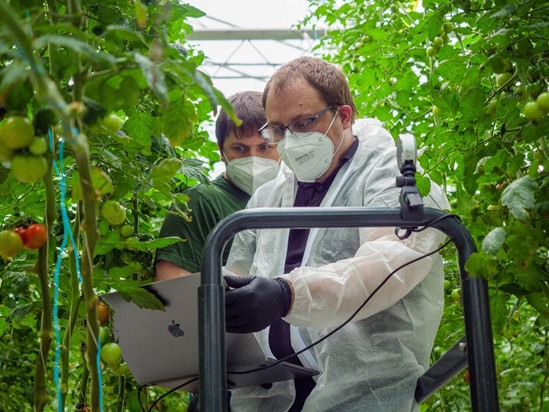Intensive greenhouse vegetable production is increasingly facing a shortage of human labor. At the same time, it is expected to help achieve the goals set in the EU Green Deal. Therefore, the transformation to Agriculture 4.0 is necessary in this sector. "Agriculture 4.0 should provide enough quality food for a still-increasing human population and at the same time respond effectively to the negative effects of climate change. This cannot be done without the intensive involvement of automation and robotics", the team with the BERABOT project says.
 The logo of the BERABOT project:
The logo of the BERABOT project:
Needs of greater involvement
The Czech BERABOT project, which is supported by the Technology Agency of the Czech Republic, is responding to the needs of greater involvement of automation and robotics in greenhouse vegetable production. It has been running since 2020 and currently is in its half time.
The research consortium consists of Tomas Bata University in Zlín, innovative company NWT and the practical applicator is greenhouse of Farma Bezdínek. The main goal of the project is to create a system for precise monitoring of tomato plants with a focus on pest scouting and short-term yield estimation. The system largely consists of developed software that will work on various platforms (PC / laptop / mobile / tablet). During its development, advanced approaches in artificial intelligence and machine learning are applied. Thanks to the acquired algorithms and models, the software will, among other things, enable automatic detection of pests.
 Data collection in the greenhouse of the Farma Bezdínek
Data collection in the greenhouse of the Farma Bezdínek
 Work on the BERABOT project in the laboratory of Tomas Bata University (photo by Jan Salač)
Work on the BERABOT project in the laboratory of Tomas Bata University (photo by Jan Salač)
Spanish standard
Tomatoes are grown in the greenhouse of Farma Bezdínek under the certified pesticide residue-free production according to the Spanish ZERYA standard. One of the critical points of tomato growing with virtually no chemical pesticides is very accurate pest monitoring. This kind of monitoring is allowing to detect pests in the early stages of development. Due to that fact, the involvement of the Farma Bezdínek in the BERABOT project is highly important. Developed automatized tools will help speed up and enhance pest monitoring. At the same time, it is relatively unique that our farm participates in the development of advanced technology, which in the end will then use itself.
 Whitefly individuals detected on yellow sticky trap by developed algorithm
Whitefly individuals detected on yellow sticky trap by developed algorithm
Whiteflies
Whiteflies are undoubtedly one of the priorities within tomato pests. Huge amounts of image data were obtained within the two-year development and cooperation of all three partners. Based on them, an algorithm was developed that can detect whitefly on yellow sticky traps with an accuracy of 90%. In the remaining two years, the team will aim to refine this algorithm and at the same time ensure its implementation into tools that will be applicable in commercial greenhouse practice.
More details can be found in this article.
For more information:
Václav Psota
Farma Bezdínek
[email protected]
www.farmabezdinek.cz
www.berabot.com
